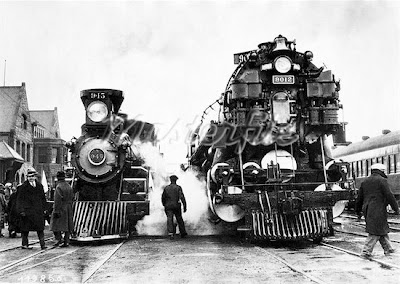Painting of King's Castle courtesy http://openbuildings.com.
As a little
girl, I would travel with my parents to the city of Koenigsberg to sell our potatoes at the
market. Walking along the sidewalk, I would look
way up at the turrets of the King’s Castle where Frederick the Great was sworn in.
As an
adult, World War II brought the British bombings, making the city a smouldering
ruins and the castle, a burnt out shell.
As a
little girl, my sister and I would spot the flags on the ships sailing through
the Frisches Haff, a freshwater lagoon opening to the Baltic Sea.
As an
adult, thousands of refugees fleeing the enemy advance crossed the frozen
Frisches Haff to waiting rescue boats.
But we never made it to the Haff, our horse spooked by gunfire.
As a
little girl, I would dream of my wedding day.
As an
adult, I read the report saying my husband went missing in action on the
Eastern Front
Photo of Elfriede (top left), Otto, Manfred & Irmgard circa 1943 courtesy Elfriede Neumann.
As a
little girl, my father built U-boats in Hamburg.
As an
adult, a Russian u-boat torpedoed and sank the ship, the Wilhelm Gustloff,
drowning 9000 East Prussian refugees in the icy Baltic Sea. That was the ship I was supposed to board!
As a
little girl, I used to hunt for Easter eggs in the forest only 100 metres from
our house.
Photo of Easter eggs courtesy www.potomaccollege.edu.
As an
adult, the same forest was hiding Russian soldiers ready to invade our village.
As a
little girl, my father would cut down a tree in our forest on Christmas Eve and
decorate it in the parlour while we waited outside the door
As an
adult, my parents’ parlour overflowed with Russian soldiers shouting: “Ten minutes to get out!”
As a
little girl, I would admire my mother’s jewelry, made from amber floating on
the Baltic
Sea.
Photo of Elfriede's amber broach courtesy Thomas Jonasson.
As an
adult, the Russians stole my jewelry, even my wedding ring.
As a
little girl, I would receive a report card from my teacher, Herr Laucht, at the
Nautzwinkel School.
As an
adult, my little girl could not attend school since it was occupied by enemy
soldiers.
As a
little girl, my father ran for mayor; we went door to door, campaigning for
votes from our Nautzwinkel neighbours.
As an
adult, enemy soldiers took my farmhouse, livestock, crops and furniture. My children and I went door to door looking
for shelter, roaming the Prussian plains.
As a
little girl, I would wake up to the birds chirping as they made nests in our
forest.
Photo courtesy http://4.bp.blogspot.com.
As an
adult, I watched my niece eat a bird’s nest to survive.
As a
little girl, I played truant from school since I had a fever.
As an adult,
a fever kept me in bed for weeks. A nice
nurse said I had malaria and gave me quinine pills to get better.
As a little
girl, I would devour the sausages cooked by my mother, purchased from our
butcher.
As an
adult, my little girl and her Opa went on a scrounging tour in Lithuania. At one house, Opa stole the meat cooking on
the stove so his granddaughter could eat.
As a little
girl, my mother and I would bake topfkuchen, a marble cake, using an old
family recipe.
As an
adult, I dug a hole to bury my mother since she had no food to eat.
As a
little girl, my sister and I would play with the wooden kitchen set carved by
our father.
As an
adult, I buried my sister soon after my parents. I took in her children whose father was still
at the Front.
As a
little girl, I would run as fast as I could when I played tag.
As an
adult, my little boy ran as fast as he could away from Russian soldiers looking
for German children to kidnap.
As a
little girl, I was proud of myself the first time I went on the potty.
As an
adult, my daughter and I went to the washroom in a cooking pot on a cattle
train, expelled from our homeland by the Russians.
Photo of East Prussian expellees courtesy www.dw.de.
As a
little girl, I was separated from my father as he served in World War I.
As an
adult, I was separated from my son for a whole year. Thanks to a chance meeting my sister had on a
Lithuanian road with my little boy and his grandparents, we were reunited.
As a
little girl, Herr Laucht taught us about the Russian Revolution and the
Communists.
As an
adult, the Communists took over East Germany. In Ruhla, I worked so hard at my factory job that
I was given many medals by the Communists.
As a
little girl I would hear the trains whistle as they left Koenigsberg station.
Photo courtesy http://image1.masterfile.com.
As an
adult, my children and I escaped from East to West Berlin on an underground train.
As a
little girl, I was amazed by World War I flying ace, Manfred von Richtofen, nicknamed
the Red Baron, who downed dozens of enemy planes.
As an
adult, I flew in a plane for the first time from West Berlin to West Germany, my escape now complete.
As a
little girl, I would listen attentively to Herr Laucht as he pointed out
different countries on his map, including Canada.
As an
adult, I steamed west across the Atlantic Ocean to Canada aboard the Castel Felice.

Map of Oma's route from East Prussia to East Germany to West Germany to Canada courtesy Thomas Jonasson.
As an
East Prussian, I suffered under the Nazis and the Communists.
As a
Canadian, I am free.
In memory of Rob's Oma, Elfriede Neumann (1911-2007).
Photo of Elfriede (Oma) courtesy Elfriede Neumann.


.jpg)





























.jpg)





















